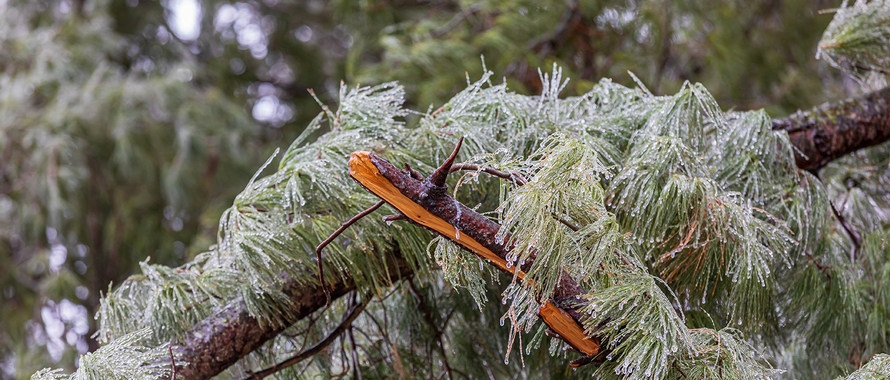Replacing Winter-damaged Trees
Discover which trees to can plant to replace those damaged by recent Oklahoma winter storms.

This spring, the devastation in our gardens is real. An October storm slid into our state with three waves of freezing rain and icy pellets that took down limbs and sometimes whole trees.
“A lot of trees took a major hit because they still had their leaves,” says Dave Edwards, former division head of Agriculture Technologies at OSU-OKC and, recently, professor of practice for the OU College of Architecture, Landscape Architecture Division. “When the foliage is still on trees and to some degree, shrubs, there’s more surface area for the ice to adhere to which equates to more weight and more damage.”
I interviewed Edwards to discover which trees we could plant to replace those lost to winter weather. Here are three top choices for a suburban or small rural yard based upon size, reliability and beauty.
Edwards predicts that Parrotia persica, Persian parrotia, aka Chinese ironwood, will one day be as popular as Pistacia chinensis, Chinese pistache.
“It has reliable performance with very hard and dense wood that is breakage resistant,” Edwards says. Other positives include fall color, beautiful bark and insignificant fruit. The only downside is marketplace availability, but Edwards thinks that will change with time.
According to the Missouri Botanical Garden’s website, it is a small to medium-sized tree “eventually growing 20 to 40 feet tall (but typically 10 feet after 7 to 8 years) or a large, multi-stemmed shrub growing to 15 feet tall.”
His second suggestion, Acer saccharum ‘Caddo,’ Caddo sugar maple, is native to southwestern Oklahoma canyons.
“It’s an ecological relic that adapted to our weather changes. Eons ago, our weather was like New England,” Edwards says.
Caddo sugar maples perform well statewide and their deeply lobed leaves are resistant to hot and dry winds. They are medium-sized trees with hard wood and attractive fall color. They can grow 30 to 50 feet tall, but are slow growing.
Gymnocladus dioicus, Kentucky coffeetree, is also native to Oklahoma. It is a medium-to-large tree growing to 60 to 80 feet tall. It has an open, fine-textured canopy with beautiful winter interest and good summer shade. Kentucky coffeetree has double compound leaves with leaflets an inch or two long. It has fragrant flowers ripening into long brown pods which remain on the tree throughout much of winter. If you don’t want fruit, you can plant a male variety like ‘Espresso.’
When planting your new tree, “the mentality should be you’re planting for future generations,” Edwards says. “Do a visual survey of planting conditions and don’t plant near the utility corridors above and below ground. Dig a generous hole and choose a tree that is 1-inch to 1.5-inch caliper.
“A smaller caliper tree will establish more readily and sooner,” Edwards says. “In three to five years it will match the size of the larger caliper tree.”
Backfill with native soil and use amendments and organic matter as mulch on the surface. Stake your tree for the first growing season. If planted in fall, staking could remain for up to a year. At the end of the growing season, if the tree is still wobbly, move the staking to another section of the trunk. Don’t place mulch up against the tree, but instead, incorporate it as a ring away from the bark.
Edwards also stresses to take your time to select the best tree for your yard and conditions. If you have more questions, ask at your local nursery or county extension office.
Most of all, he says, “Don’t panic. You’ve got time to make a good selection.”
Sign up for our Oklahoma Living Newsletter


